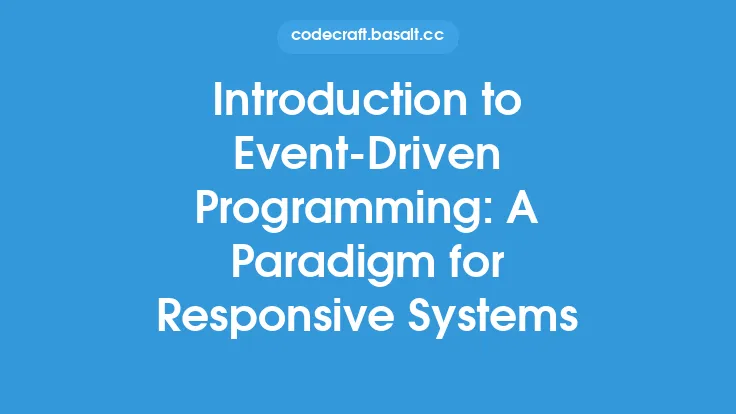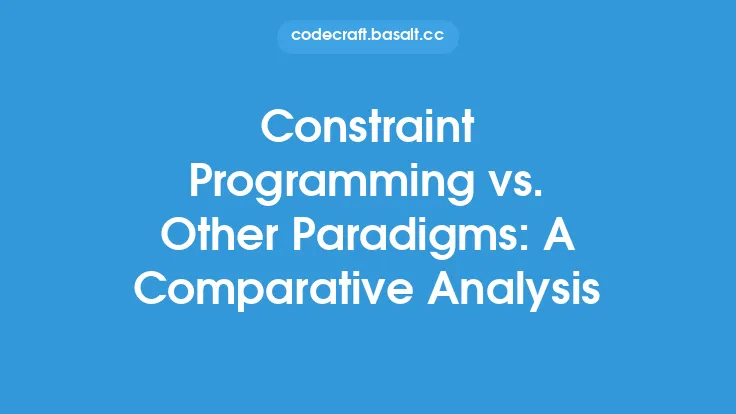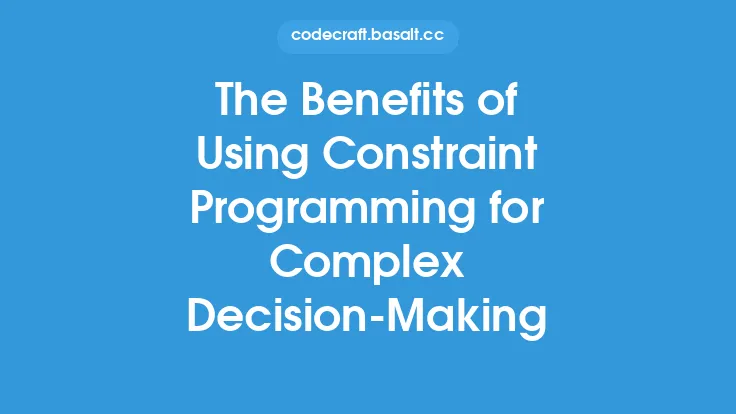Constraint programming is a powerful paradigm for modeling and solving complex problems that involve constraints and variables. At its core, constraint programming is about finding a solution that satisfies a set of constraints, which are rules or limitations that must be adhered to. This paradigm has been widely used in various fields, including artificial intelligence, operations research, and computer science, to solve complex problems that are difficult or impossible to solve using traditional programming techniques.
History and Evolution
The concept of constraint programming has its roots in the 1960s, when researchers began exploring ways to use constraints to solve problems in artificial intelligence and computer science. The first constraint programming languages, such as PROLOG, were developed in the 1970s and 1980s. These early languages were primarily used for solving logical and symbolic problems, but they laid the foundation for the development of more advanced constraint programming languages and techniques. Over the years, constraint programming has evolved to incorporate new techniques, such as constraint propagation and search strategies, which have significantly improved its efficiency and effectiveness.
Key Concepts
Constraint programming involves several key concepts, including variables, domains, and constraints. Variables are the unknown quantities that are being solved for, and domains are the sets of possible values that these variables can take on. Constraints, on the other hand, are the rules or limitations that must be satisfied by the variables. There are several types of constraints, including equality constraints, inequality constraints, and logical constraints. Constraint programming also involves the concept of a constraint network, which is a graph that represents the relationships between the variables and constraints.
Modeling Complex Problems
One of the key strengths of constraint programming is its ability to model complex problems in a natural and intuitive way. By representing the problem as a set of variables, domains, and constraints, constraint programming can capture the underlying structure and relationships of the problem. This makes it possible to solve problems that involve multiple variables, complex constraints, and non-linear relationships. Constraint programming has been used to model a wide range of complex problems, including scheduling, resource allocation, and planning problems.
Solving Constraint Problems
Solving constraint problems involves finding a solution that satisfies all of the constraints. There are several techniques that can be used to solve constraint problems, including systematic search, local search, and constraint propagation. Systematic search involves systematically exploring all possible solutions, while local search involves searching for a solution in a local neighborhood. Constraint propagation, on the other hand, involves using the constraints to reduce the search space and guide the search towards a solution. The choice of technique depends on the size and complexity of the problem, as well as the available computational resources.
Applications and Benefits
Constraint programming has a wide range of applications, including scheduling, resource allocation, planning, and optimization problems. It has been used in various fields, including manufacturing, finance, and transportation, to solve complex problems and improve efficiency. The benefits of constraint programming include its ability to model complex problems in a natural and intuitive way, its flexibility and customizability, and its ability to solve problems that are difficult or impossible to solve using traditional programming techniques. Additionally, constraint programming can provide a high degree of automation, which can reduce the need for manual intervention and improve productivity.
Relationship to Other Paradigms
Constraint programming is related to other programming paradigms, including logic programming, functional programming, and object-oriented programming. Logic programming, for example, is a paradigm that is based on formal logic and is used to solve problems that involve logical and symbolic reasoning. Functional programming, on the other hand, is a paradigm that is based on the use of pure functions and is used to solve problems that involve data transformations and computations. Object-oriented programming, which is a paradigm that is based on the use of objects and classes, can be used in conjunction with constraint programming to solve complex problems that involve multiple variables and constraints.
Challenges and Limitations
Despite its many benefits and applications, constraint programming also has several challenges and limitations. One of the main challenges is the complexity of the problems that can be solved, which can make it difficult to model and solve large and complex problems. Additionally, constraint programming can be computationally expensive, which can make it difficult to solve problems in real-time. Furthermore, constraint programming requires a high degree of expertise and knowledge, which can make it difficult to use and apply. Finally, constraint programming is not always able to find a solution, especially for problems that involve multiple variables and complex constraints.
Future Directions
The field of constraint programming is constantly evolving, with new techniques and applications being developed all the time. Some of the future directions for constraint programming include the development of more efficient and effective algorithms, the integration of constraint programming with other programming paradigms, and the application of constraint programming to new and emerging fields, such as artificial intelligence and machine learning. Additionally, there is a growing interest in the use of constraint programming for solving complex problems in areas such as healthcare, finance, and sustainability. As the field continues to evolve, we can expect to see new and innovative applications of constraint programming that will help to solve some of the world's most complex and challenging problems.





